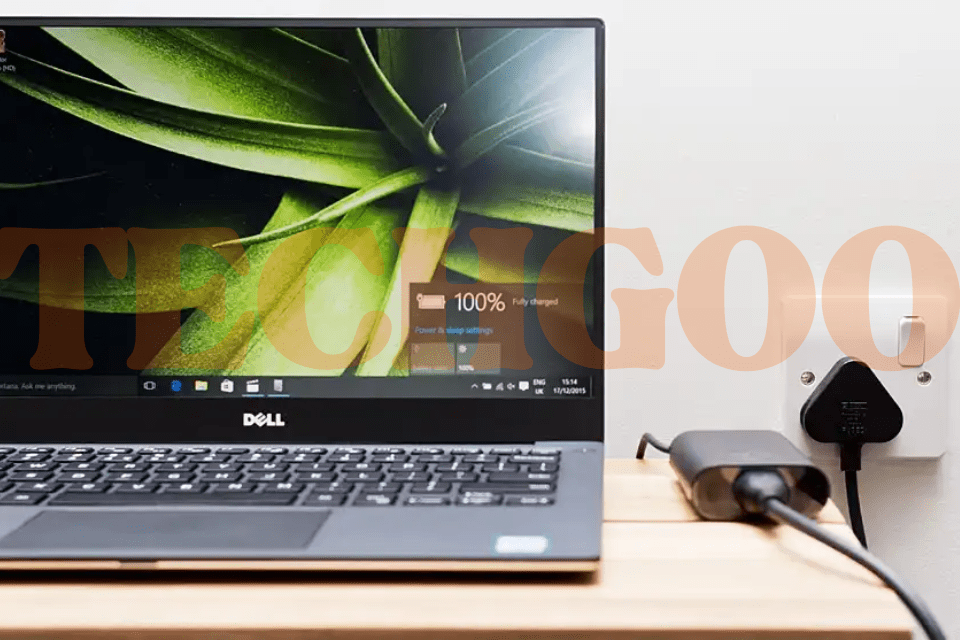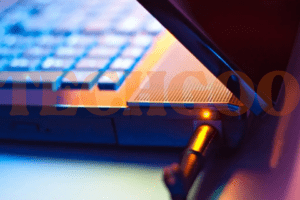A laptop uses between 50 and 100 W/hour when it is being used, depending on the model. In stand-by mode, the power consumption of both a desktop and a laptop falls to about a third.
Therefore, the amount of electricity a laptop uses in 24 hours would depend on whether it is being used continuously or in stand-by mode. Laptops have become an essential part of our daily lives, allowing us to work, study, and entertain ourselves on the go.
But have you ever wondered how much electricity a laptop consumes in 24 hours? The answer may vary depending on the model and usage. We will explore the power consumption of laptops and provide an estimate of how much electricity they use over a day. Understanding the energy consumption of your laptop can help you make informed decisions about energy efficiency and reduce your carbon footprint. So, let’s dive in and find out how much electricity a laptop uses in 24 hours.

Credit: www.rollingstone.com
Understanding Laptop Power Consumption
A laptop typically uses between 50 and 100 W/hour when in use, resulting in a power consumption of 150 to 300 kWh over a span of 24 hours. This usage leads to the emission of 44 to 88 kg of CO2 per year.
In standby mode, power consumption decreases to about a third.:
Laptop power consumption varies depending on various factors such as the laptop model, screen brightness, running programs, battery charging, and more. Here are some important points to understand about laptop power consumption:
Different power requirements for different laptop models:
- Laptop models have varying power requirements, which affect the amount of electricity they consume in a 24-hour period.
- Some laptops are designed to be energy-efficient, consuming less power compared to high-performance laptops.
- Ultra-thin and lightweight laptops are often optimized for power efficiency, which results in lower power consumption.
Factors affecting power usage:
- Screen brightness: Higher screen brightness settings consume more power. Adjusting the screen brightness to a lower level can help reduce power consumption.
- Running programs and tasks: Running resource-intensive programs such as video editing software or online gaming can significantly increase power consumption. Idle or lightweight tasks consume less power.
- Battery charging: Charging the laptop battery while it is turned on consumes additional power. It is recommended to charge the laptop when it is not in use to avoid unnecessary power consumption.
The average power consumption range for laptops:
- On average, laptops consume between 50 and 100 watts per hour (W/h) when in use, depending on the model and usage intensity.
- For a laptop used for eight hours a day, the power consumption ranges from 150 to 300 kilowatt-hours (kWh) annually, resulting in the emission of 44 to 88 kilograms of CO2 per year.
- When in stand-by mode or sleep mode, both desktop and laptop power consumption decreases to approximately one-third of their usual power usage.
Understanding laptop power consumption is crucial for optimizing energy usage and minimizing environmental impact. By considering the factors mentioned above, users can make informed choices to reduce power consumption and promote energy efficiency.
Remember, being conscious of power consumption not only saves electricity but also contributes to a greener and more sustainable future.
Calculating Power Consumption For A Laptop In 24 Hrs
A laptop typically uses between 50 and 100 watts per hour when being used, resulting in a power consumption of 150 to 300 kWh over a 24-hour period. This translates to emitting between 44 and 88 kg of CO2 per year.
Determining The Laptop’S Power Rating:
- The power rating of a laptop is typically listed on the manufacturer’s website or labeled on the laptop’s power adapter.
- It is important to look for the “Wattage” or “W” rating, which represents the amount of power the laptop consumes when it is operating.
Estimating Power Usage Based On Laptop Usage Patterns:
- On average, a laptop consumes between 50 and 100 Watts per hour when in use.
- However, the power consumption can vary depending on the laptop model, screen brightness, and the tasks being performed.
- To estimate power usage, consider the average number of hours the laptop is being used per day.
Calculating The Total Power Consumption In Kilowatt-Hours (Kwh) For 24 Hours:
- Multiply the laptop’s power rating (in Watts) by the number of hours it is being used in a day to get the total power consumption in Watt-hours (Wh).
- Divide the total power consumption in Watt-hours by 1000 to convert it to kilowatt-hours (kWh).
For example, if a laptop has a power rating of 60 Watts and is used for 8 hours in a day:
- Total power consumption = 60 Watts x 8 hours = 480 Watt-hours (Wh)
- Total power consumption in kilowatt-hours = 480 Wh / 1000 = 0.48 kWh
By understanding the laptop’s power rating and estimating its power usage based on usage patterns, you can calculate its total power consumption in kilowatt-hours (kWh) for 24 hours.
Impact Of Laptop Power Consumption On Energy Bills And Carbon Footprint
A laptop consumes between 50 and 100 W/hour while being used, resulting in approximately 150-300 kWh and 44-88 kg CO2 emissions per year when used for 8 hours a day. In standby mode, power consumption decreases to around one third for both laptops and desktops.
Discussing The Potential Cost Implications Of Running A Laptop Continuously
Running a laptop continuously can have a significant impact on your energy bills. Here are some potential cost implications to consider:
- Electricity consumption: A laptop typically uses between 50 and 100 watts per hour when it is being used. If you use your laptop for eight hours a day, that adds up to a consumption of between 150 and 300 kilowatt-hours (kWh) per year.
- Energy costs: The exact cost will depend on your electricity rates, but assuming an average rate of $0.12 per kWh, running a laptop for eight hours a day can cost between $18 and $36 per year in electricity.
- Increased energy usage: If you have multiple laptops in your household or use your laptop for longer periods, the energy consumption and cost can be even higher.
Environmental Impact Of Laptop Power Consumption
Laptop power consumption not only affects your energy bills but also contributes to your carbon footprint. Here’s how it impacts the environment:
- CO2 emissions: On average, a laptop that is used for eight hours a day emits between 44 and 88 kilograms of CO2 per year, depending on its power consumption. This contributes to climate change and global warming.
- Energy efficiency: Choosing energy-efficient laptops can help reduce CO2 emissions. Look for ENERGY STAR certified laptops that meet strict energy efficiency requirements.
Comparing Laptop Power Consumption To Other Common Household Appliances
It’s important to put laptop power consumption into perspective by comparing it to other household appliances. Here’s a comparison:
- Laptop vs. Desktop: Both laptops and desktops consume less power in stand-by mode compared to when they are in use. In stand-by mode, their power consumption falls to about a third, reducing energy usage and costs.
- Laptop vs. Refrigerator: While a laptop consumes between 150 and 300 kWh per year when used for eight hours a day, an average refrigerator consumes around 400-1000 kWh per year. The refrigerator is one of the largest energy consumers in most households.
- Laptop vs. Air conditioner: An air conditioner can consume several thousand kWh per year, depending on usage and efficiency. Compared to an air conditioner, a laptop’s power consumption is relatively low.
By understanding the potential cost implications and environmental impact of laptop power consumption, you can make informed choices to reduce both your energy bills and carbon footprint.
Tips To Reduce Laptop Power Consumption
Reduce laptop power consumption with these tips. A laptop typically uses between 50 and 100 W/hour when in use, resulting in 150-300 kWh and 44-88 kg of CO2 emissions per year. In standby mode, power consumption drops significantly.
Adjusting power settings:
- Lower the screen brightness: Dimming the screen brightness can significantly reduce the amount of power consumed by the laptop.
- Enable power-saving mode: Activating the power-saving mode on your laptop can optimize power usage by minimizing background processes and reducing CPU performance.
- Customize power plan settings: Adjusting the power plan settings to prioritize energy efficiency can further reduce power consumption.
Utilizing power-saving modes and hibernation:
- Use sleep mode: Instead of leaving your laptop running idle, put it in sleep mode when not in use. Sleep mode consumes less power and allows you to quickly resume your work.
- Hibernate your laptop: Hibernation mode saves more power than sleep mode by saving your current work and shutting down the laptop. This mode is helpful when you won’t be using your laptop for an extended period.
Unplugging unnecessary peripherals and charging devices:
- Remove USB devices: Unplug any unused USB devices, such as external hard drives or flash drives. These devices draw power even when not actively in use.
- Disconnect unnecessary external displays: If you are not using an external monitor or projector, disconnect it to reduce power consumption.
- Charge devices only when necessary: Avoid leaving your laptop plugged in for extended periods. Charge your devices when needed and unplug them once they are fully charged.
Implementing these tips can help you maximize the battery life of your laptop and reduce its power consumption. By making these small adjustments, you can contribute to energy conservation and decrease your environmental footprint.
Frequently Asked Questions On How Much Electricity Does A Laptop Use In 24Hrs?
How Much Power Does A Laptop Use In A Day?
A laptop uses between 50 and 100 watts per hour when being used. In standby mode, it consumes about a third of that power.
How Much Does It Cost To Run A Laptop 24 Hours A Day?
A laptop consumes about 50 watts of electricity, costing approximately 24p per day when used for 8 hours.
How Much Does It Cost To Use A Laptop For 1 Hour?
A laptop consumes about 50 watts of electricity, costing approximately 24p to use for 1 hour.
How Much Electricity Does A Computer Use In 24 Hours?
A laptop uses between 50 and 100 watts per hour. If used for 24 hours, it will consume between 1. 2 and 2. 4 kilowatt-hours of electricity.
Conclusion
To run. However, the actual cost may vary depending on the laptop model and its power consumption. It’s important to note that laptops are generally more energy-efficient compared to desktop computers. Laptops have advanced power management features that allow them to conserve energy when not in use.
This means that if you’re concerned about electricity usage, using a laptop instead of a desktop can make a significant difference in your energy consumption. The amount of electricity a laptop uses in 24 hours depends on factors such as its power consumption, usage time, and energy-saving features.
While different laptop models may have varying power requirements, it’s generally estimated that a laptop consumes between 50 and 100 watts per hour when in use. By understanding your laptop’s energy usage and making conscious efforts to maximize energy efficiency, you can reduce your environmental impact and lower your electricity costs.
So, be mindful of how you use your laptop and make sustainable choices whenever possible.




